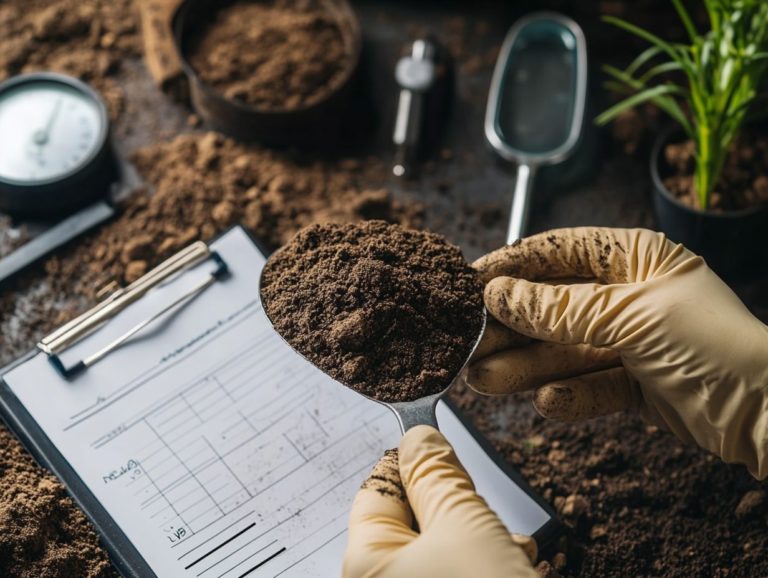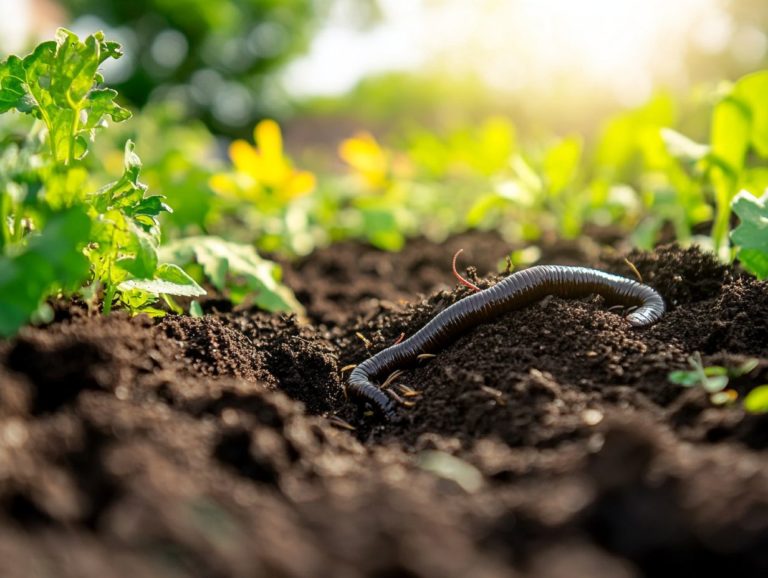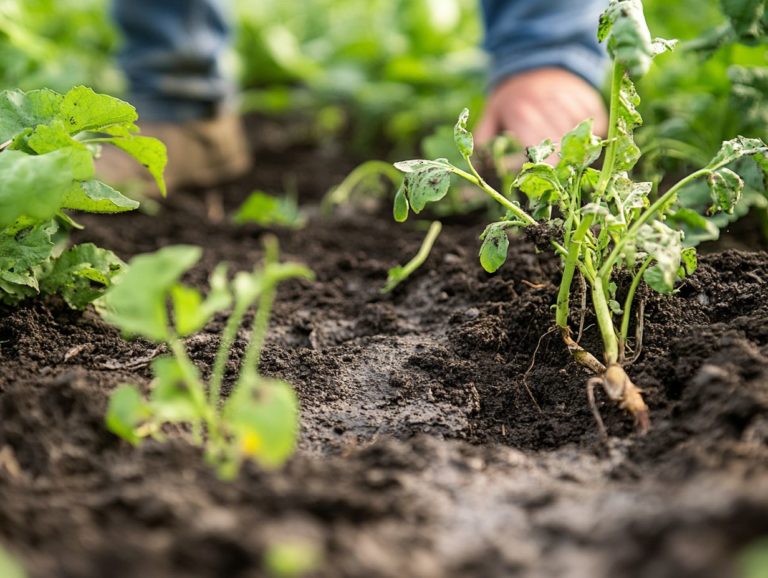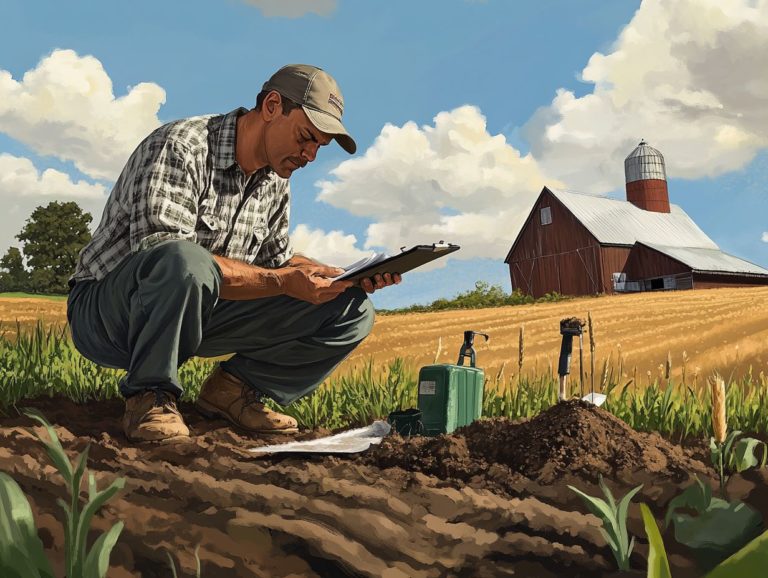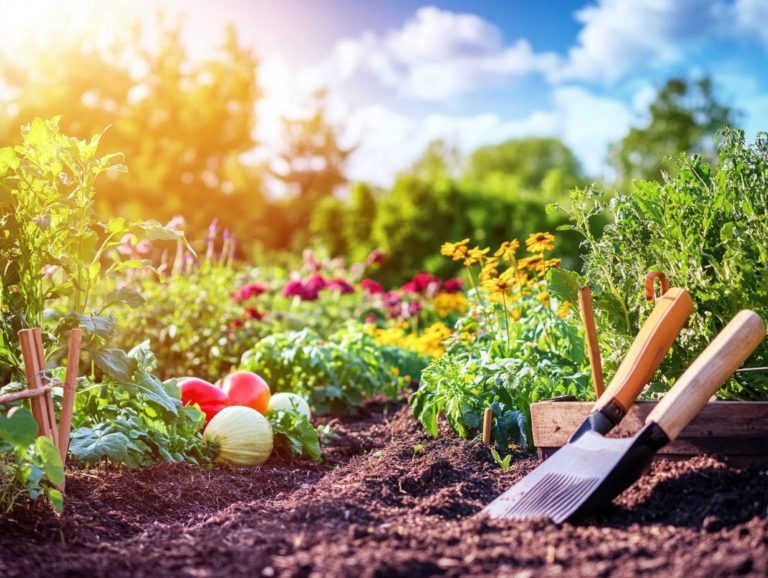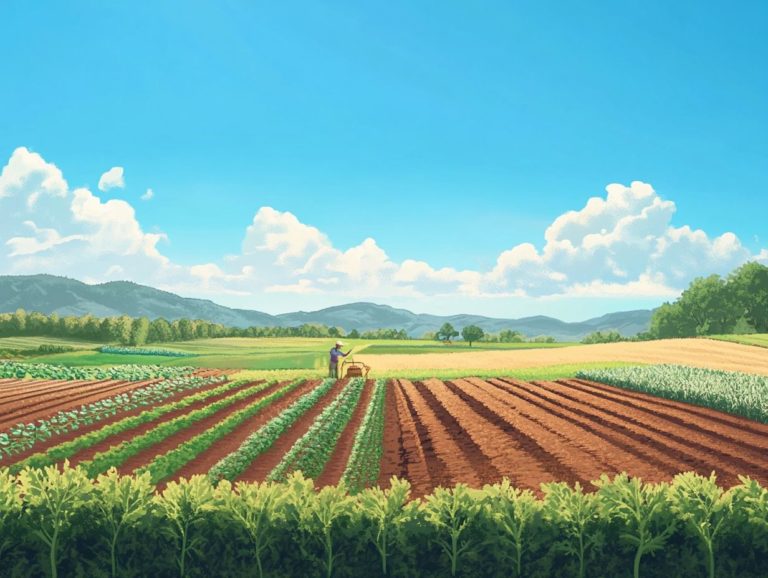The Art of Soil Layering in Gardening
Soil layering is a transformative technique that can elevate your garden into a thriving ecosystem. It s an easy method for home gardeners to adopt.
By grasping its myriad benefits, such as enhanced nutrient retention and decreased erosion, you can cultivate a more resilient environment for your plants. Let s explore the different soil layers you can use, including topsoil, subsoil, and bedrock, while offering a comprehensive step-by-step guide to implementing this method in your own garden.
You ll also uncover valuable tips for maintaining your layered soil, ensuring its long-term health and productivity. Dive into this journey and see how soil layering can transform your gardening!
Contents
- Key Takeaways:
- What is Soil Layering?
- Benefits of Soil Layering in Gardening
- Types of Soil Layers
- How to Implement Soil Layering in Your Garden
- Tips for Maintaining Soil Layering
- Frequently Asked Questions
- What is the art of soil layering in gardening and how can techniques like simple layering and tip layering enhance your garden?
- Why is soil layering important in gardening, especially for maintaining moisture and enhancing aesthetics?
- What are the different layers of soil in a layered garden bed, particularly for growing native plants and ornamental grasses?
- How do I create a layered garden bed?
- What are the benefits of using the art of soil layering in gardening?
- Can I use any type of soil for soil layering in gardening?
Key Takeaways:
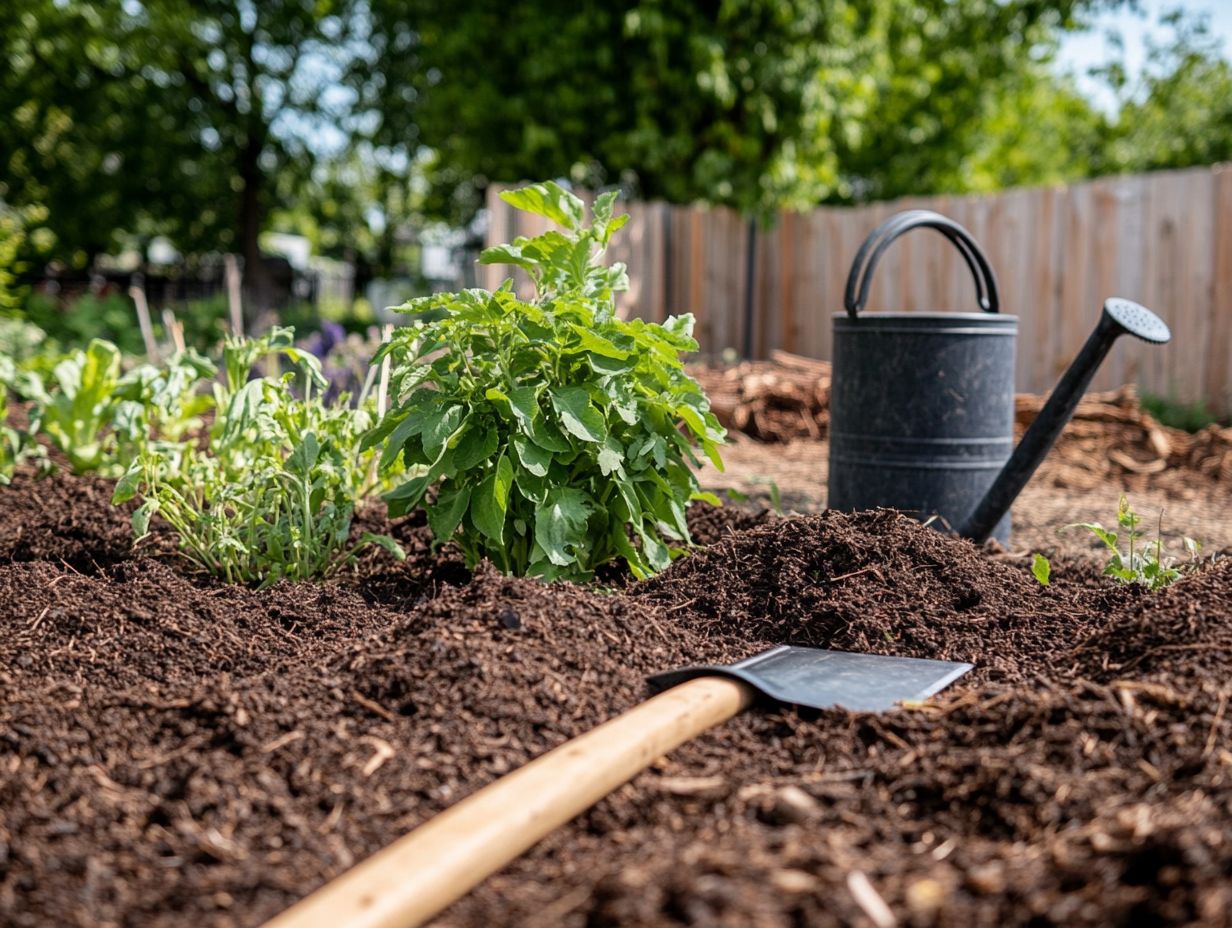
- Soil layering improves nutrient retention and reduces erosion.
- Topsoil, subsoil, and bedrock are the main soil layers to consider.
- Prevent soil compaction and regularly manage nutrients to maintain layered soil.
What is Soil Layering?
Soil layering is an advanced gardening method that allows you to strategically layer various types of soil. This fosters the healthy growth and propagation of a wide range of plants, including shrubs and climbing species. This method is not only accessible for home gardeners but also remarkably effective in creating a rich habitat for wildlife.
By employing soil layering, you can enhance moisture retention, improve nutrient distribution, and even stimulate the growth of new plants all while crafting a visually stunning garden landscape that nurtures thriving ecosystems.
Benefits of Soil Layering in Gardening
The advantages of soil layering in gardening are numerous. You can significantly enhance moisture retention, boost nutrient availability, and foster a greater variety of plants and animals within your garden ecosystem.
Improved Nutrient Retention
Improved nutrient retention stands out as one of the primary benefits of incorporating soil layering into your gardening practices. It effectively sustains the essential elements necessary for vibrant plant growth.
Creating layers of different types of soil enables the soil to retain moisture and nutrients with remarkable efficiency. Compost plays a pivotal role in this process, gradually breaking down to enrich the upper layers with vital nutrients. For instance, root vegetables like carrots and beets thrive in this nutrient-rich, well-draining setting, taking full advantage of the enhanced nutrient availability.
Leafy greens like kale and spinach thrive, soaking up the moisture retained within these layers. This supports their robust growth. Ultimately, adopting a well-structured soil layering technique cultivates healthier plants and fosters a more resilient garden ecosystem.
Reduced Erosion and Water Runoff
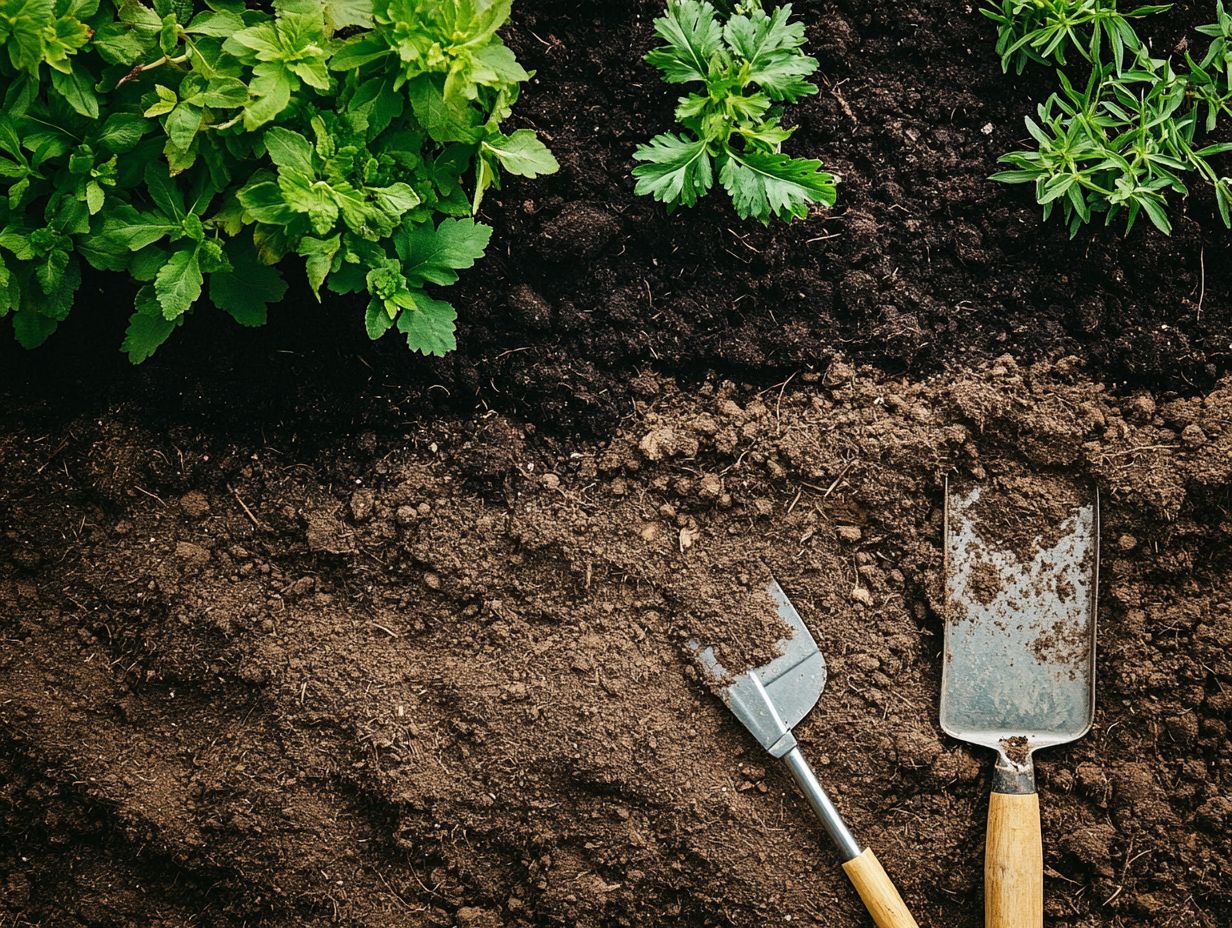
Soil layering is a powerful technique that can significantly reduce erosion and water runoff. This creates a more stable environment for plants and fosters a vibrant wildlife habitat.
This method involves the thoughtful arrangement of various soil types, effectively slowing the movement of water across the surface. By establishing a barrier that temporarily retains water, it promotes moisture retention, allowing plants to develop deeper, more robust root systems.
For example, incorporating layers of organic matter can greatly enhance nutrient availability and support rich biodiversity. These well-nurtured environments not only favor plant growth but also attract beneficial insects and wildlife, contributing to healthier ecosystems.
As diverse vegetation thrives, it cultivates a natural habitat for wildlife while playing an essential role in maintaining ecological balance.
Types of Soil Layers
Understanding the various types of soil layers is essential for cultivating a thriving garden and ensuring successful propagation. Each layer topsoil, subsoil, and bedrock serves a unique purpose in fostering plant health and promoting robust growth.
By grasping the characteristics and functions of these layers, you can enhance your gardening practices and create an environment where plants especially heirloom varieties flourish.
Topsoil, Subsoil, and Bedrock
The three main types of soil layers are topsoil, subsoil, and bedrock, each playing a distinct role in nurturing plant growth and health.
The uppermost layer, topsoil, is where the magic happens. Rich in organic matter and teeming with microorganisms, it s the most fertile ground where your plants truly thrive. This nutrient-dense layer supports a lush array of flora, from vibrant wildflowers to hearty vegetables. It effortlessly retains moisture and essential nutrients that plant roots eagerly seek out.
Just beneath that lies the subsoil, a less flashy yet vital component. While it contains minerals and less organic material, it provides structural support for deep-rooted grasses and trees that dig deep for resources.
At the very bottom, bedrock serves as the solid foundation, shaping the drainage and mineral makeup of the layers above. This is crucial for plants like cacti and succulents, which thrive in well-drained conditions while tapping into the mineral wealth from the deeper soil horizons.
How to Implement Soil Layering in Your Garden
Start implementing soil layering today to give your plants the best possible chance! Follow a systematic approach that guarantees the ideal conditions for optimal plant health.
Each step will guide you toward creating a thriving environment, ensuring your plants flourish beautifully. This includes using hormone rooting compound to achieve optimal results.
Step-by-Step Process
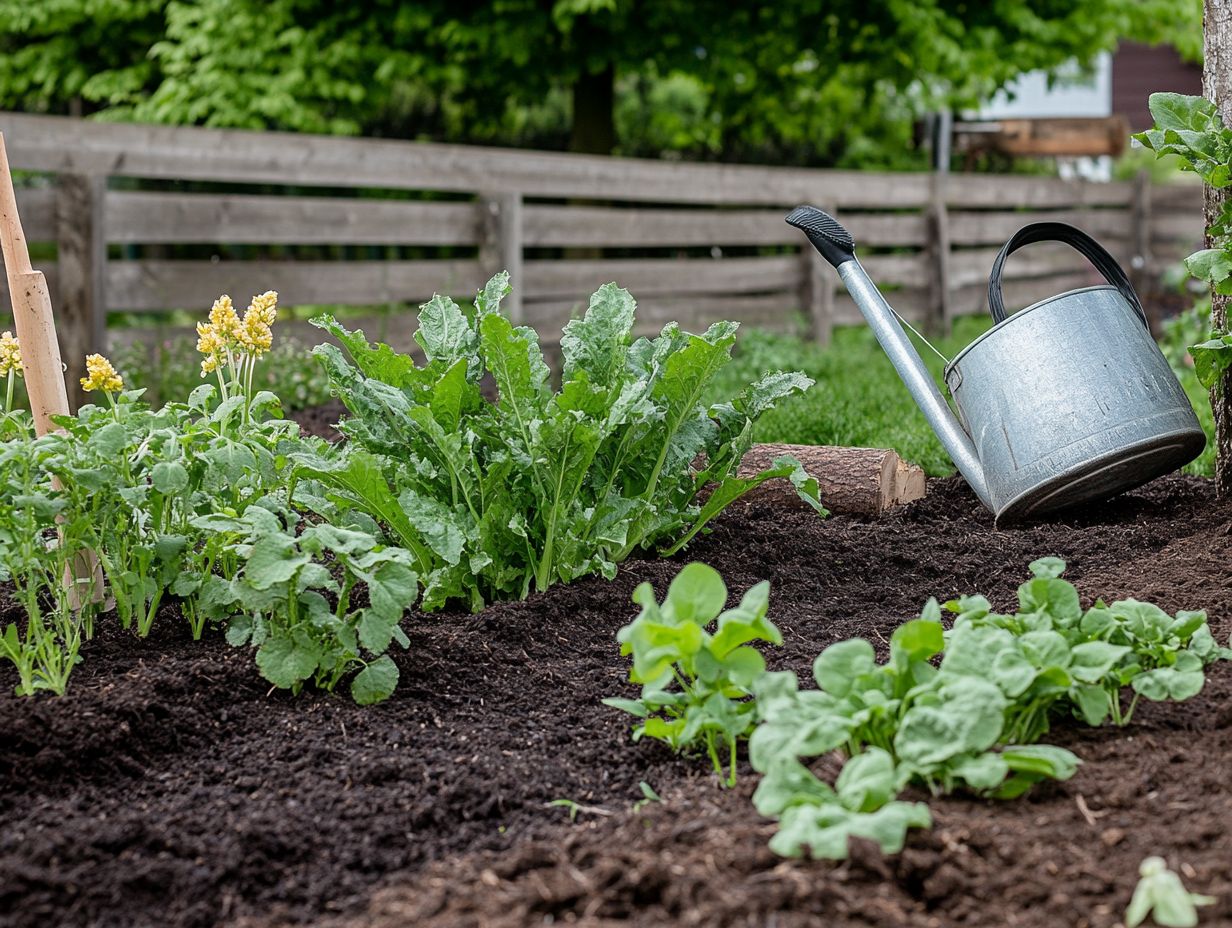
The step-by-step process for implementing soil layering in your garden comprises several straightforward actions that can elevate your gardening experience.
By breaking these actions into manageable tasks, you whether a novice or a seasoned horticulturist can seamlessly incorporate this technique. Soil layering boosts your soil s structure and nutrients, creating a powerhouse for your plants!
Begin by assessing your existing soil conditions. Then, selectively add organic matter, like compost and well-rotted manure, ensuring each layer serves a unique purpose. Embracing this method enables you to cultivate thriving plants while boosting both yield and vitality.
This approach also reduces reliance on synthetic fertilizers.
Tips for Maintaining Soil Layering
Maintaining soil layering in your garden demands careful attention to various factors. This ensures your plants thrive with health and vitality. By prioritizing this aspect, you create an optimal environment for growth.
Preventing Soil Compaction
Preventing soil compaction is crucial for maintaining healthy soil layering. Compacted soil can seriously hinder plant growth and nutrient absorption.
To create an optimal environment for root development, employ proper management techniques. One effective strategy is aeration. It allows air, water, and nutrients to penetrate the soil more efficiently, enhancing the overall health of your ecosystem.
Incorporating organic matter, like compost, can further improve soil structure and promote beneficial microbial activity. Consider planting deep-rooted species, such as alfalfa or clover, to help aerate the soil. Their roots create channels that enhance drainage and aeration.
By ensuring a balanced approach to soil management, you not only preserve the integrity of layered soil structures but also nurture a thriving habitat for a diverse range of plants.
Try out soil layering in your garden today for immediate benefits!
Managing Nutrient Levels
Managing nutrient levels within your soil layering system is essential for fostering healthy plant growth. Use techniques that maximize the effectiveness of your gardening endeavors.
By seamlessly integrating compost and other organic materials, you ll create a vibrant garden that thrives with life! This environment not only enhances soil fertility but also boosts microbial activity tiny organisms in the soil that help plants absorb nutrients. This layered approach helps nutrients to be released slowly, benefiting the roots over time and improving overall plant health.
Incorporating a diverse array of organic matter like leaf mold, aged manure, or green compost can further enrich this thriving ecosystem. These strategies also support healthy plant growth and ensure your plants thrive with resilience against diseases and pests. This leads to robust yields and rewarding gardening experiences.
Frequently Asked Questions
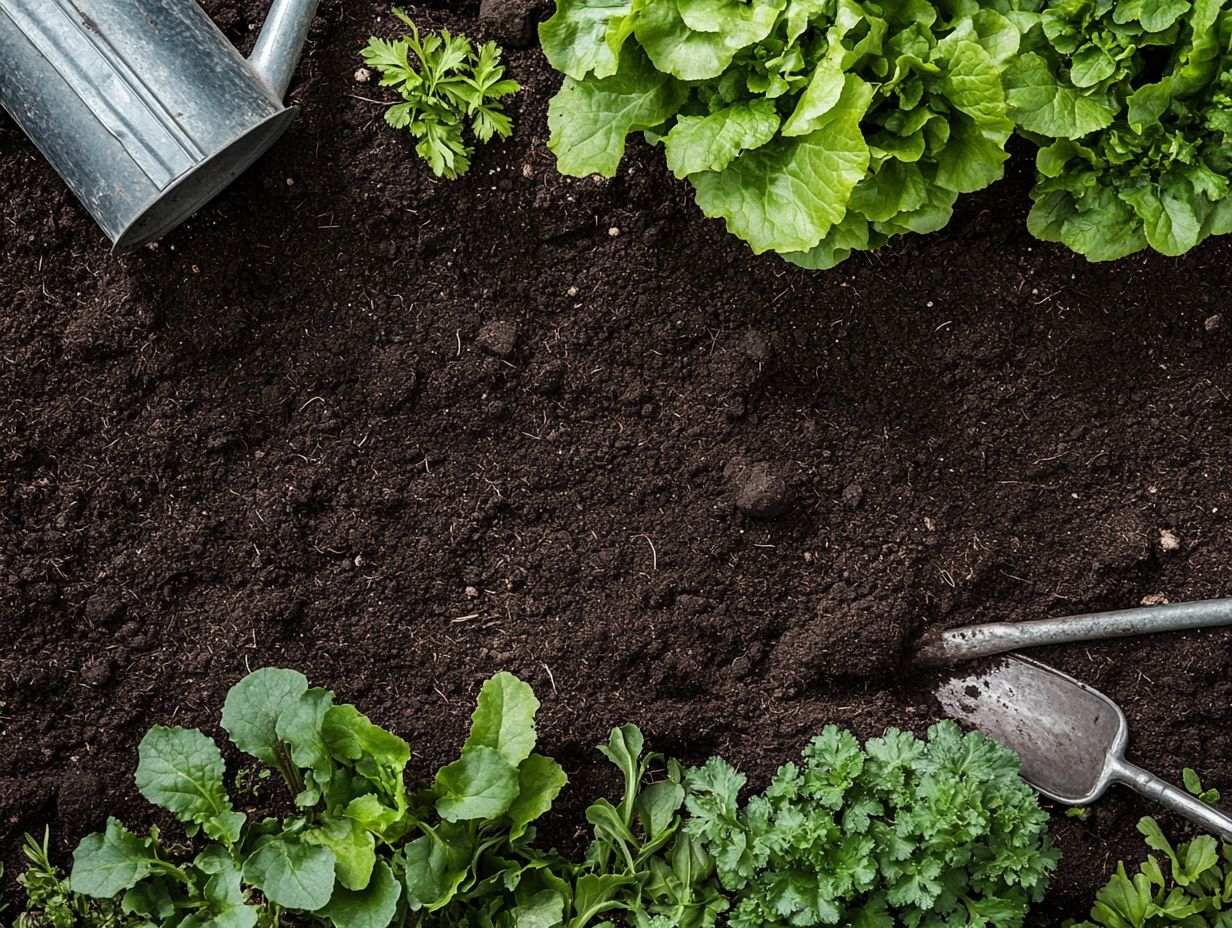
What is the art of soil layering in gardening and how can techniques like simple layering and tip layering enhance your garden?
The art of soil layering in gardening helps create a rich environment for your plants to thrive. By strategically layering different types of soil in a garden bed, you provide essential nutrients and support for hardy native plants.
Why is soil layering important in gardening, especially for maintaining moisture and enhancing aesthetics?
Soil layering is important because it promotes better root growth, retains moisture, and provides essential nutrients for plants. This makes it a vital technique for any home gardener.
What are the different layers of soil in a layered garden bed, particularly for growing native plants and ornamental grasses?
In a layered garden bed, you will typically find three layers of soil. The top layer is composed of organic matter like compost or mulch, the middle layer is a mix of topsoil and compost, and the bottom layer consists of subsoil or clay. This layering technique enhances the texture and moisture retention of the garden.
How do I create a layered garden bed?
To create a layered garden bed, first, clear the area of any existing vegetation and debris. Begin by adding a layer of organic matter on top. Next, add a mix of topsoil and compost in the middle, and finish with a layer of subsoil or clay at the bottom. This simple layering process can also incorporate propagation techniques for new plants, such as tip layering or air layering.
What are the benefits of using the art of soil layering in gardening?
The benefits of soil layering include improved soil structure, increased plant growth and yield of shrubs and climbers, reduced soil compaction, and better water retention. This technique is especially beneficial in spring and autumn.
Can I use any type of soil for soil layering in gardening?
It is best to use a mix of different types of soil for soil layering, as each layer serves a specific purpose. You might also want to consider using a hormone rooting compound to enhance the rooting of climbing roses or blackberries.
Start layering your garden today for a lush, thriving space!

